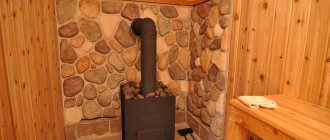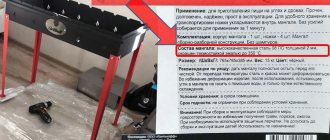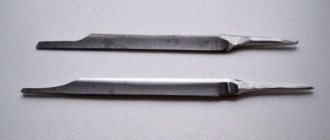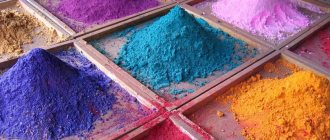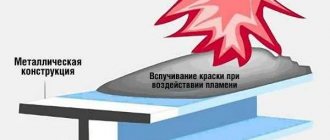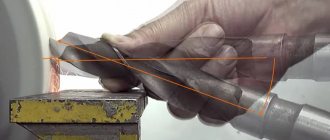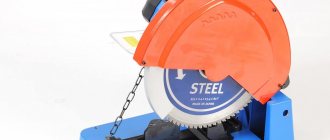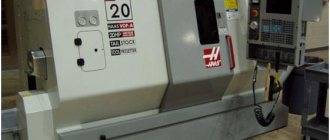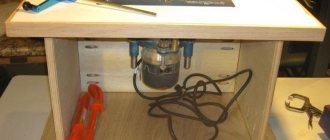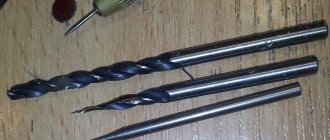Tags: thermal paint_on_metal, heat-resistant_paint_with-your-hands, how_to_make_heat-resistant_paint
Comments 45
I’m wondering how the stove behaves from the point of view of IR heat emission after such painting.
If it's not for laboratory research, you won't feel it.
Why did I ask the question? I placed a screen made of polished aluminum sheet behind the stove - 5 cm. When the stove is fired, the screen does not heat up - or rather, no higher than the ambient air temperature, before that the wall of white (lime) plastered walls behind the stove warmed up very well. I assume that painting with aluminum reduces the IR radiation and, accordingly, the efficiency of the stove. analyztepla.ru/articles/2…/ko-ffitcient-izlucheniya. This is interesting to me, because... I haven’t painted the stove yet, but I made the garage according to the principle of a thermos - the top and half of the walls on top are insulated + foam foil inside the garage. But besides this, I have two fans blowing the rocket hood onto my small potbelly stove. I googled the topic: stroiteli.info/archive/index.php/t-1987.html, everyday arguments: a chrome-plated kettle cools down faster than a smoked one. For now, paint the conclusions black...
I was somehow interested in this topic. All these reflectors work as long as they are clean and at a short distance from the source. Like a mirror, pure reflects. And as soon as you cover it with something, either dirt or an object, it stops reflecting. It’s the same with a stove, it reflects from a distance, but if you press it (like paint) it just heats up.
Did you follow the links? “Metals, especially materials with a shiny surface, have low emissivity, which can vary with temperature. The emissivity can be manually set in the thermal imager.” www.dpva.ru/guide/guideph…isioncoefficientstable01/ “Emissivity (or degree of emissivity) - ε shows the ratio of the energy of thermal radiation of a 'gray body' according to Stefan Boltzmann's Law, to the radiation of a 'black body' at the same temperature. The emissivity of a completely black body is ε = 1.” Aluminum sheet Emissivity degree of emissivity 0.09 Aluminum Foil Emissivity degree of emissivity 0.04 Aluminum highly oxidized Emissivity degree of emissivity 0.2 - 0.31 Polished aluminum Emissivity degree of emissivity 0.039 - 0.057 Rough processed aluminum Emissivity degree of emissivity 0.07. Conclusions - with aluminum on the surface - the stove will produce little IR component in heat, well, more (the thermal conductivity of aluminum is higher than 209 versus 74 for steel), there will be more convection... Or it will go down the chimney 
If you direct the beam at a mirror, it will be reflected; if the beam is directed at the opposite side of the mirror, it will heat it up.
If you direct the beam at a mirror, it will be reflected; if the beam is directed at the opposite side of the mirror, it will heat it up.
It depends on the reverse side)))
Why did I ask the question? I placed a screen made of polished aluminum sheet behind the stove - 5 cm. When the stove is fired, the screen does not heat up - or rather, no higher than the ambient air temperature, before that the wall of white (lime) plastered walls behind the stove warmed up very well. I assume that painting with aluminum reduces the IR radiation and, accordingly, the efficiency of the stove. analyztepla.ru/articles/2…/ko-ffitcient-izlucheniya. This is interesting to me, because... I haven’t painted the stove yet, but I made the garage according to the principle of a thermos - the top and half of the walls on top are insulated + foam foil inside the garage. But besides this, I have two fans blowing the rocket hood onto my small potbelly stove. I googled the topic: stroiteli.info/archive/index.php/t-1987.html, everyday arguments: a chrome-plated kettle cools down faster than a smoked one. For now, paint the conclusions black...
Have you checked how hot the wall behind the aluminum sheet is now? I suspect that it hasn't gotten much smaller. After all, aluminum has strong thermal conductivity. And most likely it just radiates heat into the wall. That's why it doesn't heat itself.
Regarding the aluminum, it gives off heat into the wall - there are air gaps there... Honestly, I myself expected that the aluminum would heat up - at least by convection of hot air, but it felt cold (by hand) (the wall was quite warm, the sensations, of course, lie, because the heat transfer coefficients are different metal and plaster). Here is an example photo for understanding (now the galvanized sheet has already been removed and the film has been removed from the aluminum. And with galvanization the same result - the galvanization did not heat up. The wall behind the galvanization too. Above in the thread I provided links where you can see that aluminum (polished) reflects very well IR. Galvanization is a little worse. This thread discusses something slightly different - how aluminum emits the IR component of heat from the stove, and not how it reflects... Because the paint “seems to” not reflect heat back into the stove - there is a boundary of media - metal-metal, although silicate glass... but this is from the area of the foil film under the concrete screed... At the stove-steel-paint interface, heat transfer will be transferred through metals... And at the paint-air interface, convection (with air) and IR radiation will work. Convection is supposed to improve (aluminum will give up heat to the air faster than iron), and the IR will deteriorate (by the emissivity of aluminum)... If you can see from the photo that I am in favor of using IR inside the garage I will heat it and measure it with an IR pyrometer...
Here is an example photo for understanding (now the galvanized sheet has already been removed and the film has been removed from the aluminum. And with galvanization the same result - the galvanization did not heat up. The wall behind the galvanization too. Above in the thread I provided links where you can see that aluminum (polished) reflects very well IR. Galvanization is a little worse. This thread discusses something slightly different - how aluminum emits the IR component of heat from the stove, and not how it reflects... Because the paint “seems to” not reflect heat back into the stove - there is a boundary of media - metal-metal, although silicate glass... but this is from the area of the foil film under the concrete screed... At the stove-steel-paint interface, heat transfer will be transferred through metals... And at the paint-air interface, convection (with air) and IR radiation will work. Convection is supposed to improve (aluminum will give up heat to the air faster than iron), and the IR will deteriorate (by the emissivity of aluminum)... If you can see from the photo that I am in favor of using IR inside the garage I will heat it and measure it with an IR pyrometer...
Results
Paint the grill with heat-resistant paint
I want to say that the process of painting the grill was not difficult at all. Preparation does not take so much time, and the area is not so large that you need to put it off “for later.” The main thing is how the end result will look, because it is much more pleasant to invite friends to barbecue on a beautiful grill, and not on a rusty structure. Choose your paint carefully and read the instructions for its use before you start using the material. Proper preparation of the metal and compliance with the temperature conditions during painting will allow you to not think about updating the appearance of your roaster for many years
Source of the article: https://dekormyhome.ru/remont-i-oformlenie/jarostoikaia-kraska-dlia-pokraski-mangala-svoimi-rykami.html
Types of heat-resistant paints for ovens
Colorants labeled "heat resistant" vary in the maximum temperature they can withstand. Several main types should be distinguished:
- Up to 80 degrees . This composition has the lowest degree of heat resistance. At temperatures closer to eighty degrees, they begin to deteriorate: crack and swell. For devices that will run on wood fuel, this composition is not suitable, because the combustion temperature of the logs is much higher.
- Up to 100 degrees . Such products are more stable. They do not fade or fade. They are used to paint those parts of the heating product where water is located. After all, the boiling point of water is 100 degrees, so the dyes in this case will last a very long time. But it is not recommended to completely paint all stove surfaces with this coloring agent, as it may crack. On the packaging of this type of product you can find the words “acrylic” or “alkyd”. The most common aerosol forms of release.
- Up to 120 degrees . High-temperature paint for this type of stove can withstand even higher temperatures. These are products that contain polyurethane, epoxy or acrylic.
- Up to 200 degrees . Such coatings can be applied to furnace parts that do not heat up very much (the ash door). If you apply type 4 products to the entire surface or metal parts inside, it will begin to burn and quickly deteriorate.
- Up to 400 degrees . These are ethyl silicates or epoxy esters. The composition of such products includes small metal particles, which help to significantly increase the resistance of the coating to heat and increase its service life.
- Up to 650 degrees . Such products can be used to cover the entire surface of the oven. When heated strongly, they will not melt or deform. Silicone, zinc and aluminum are added to their composition, which ensure resistance and durability.
Types of mixtures for metal
Since manufacturers produce their products in different forms, everyone can choose their own option for independent use. At the moment I know these types of paints:
- Liquid mixtures that are packaged in containers and are immediately ready for use
- Aerosol cans
- Powder
Thanks to aerosol cans, application to the surface becomes very simple, but remember that they are best used for small painting objects. The price of such mixtures is much higher than other analogues due to the complex manufacturing and components in the composition that allow the paint to dry quickly.
But powder paint is used in industry. It is applied to the part and then baked in an oven, forming a high-quality coating.
While choosing the necessary mixture, I came across the requirements that heat-resistant paint should have:
- Low electrical conductivity
- The composition must be resistant to chemical influences. Due to the negative influence of the environment in which the material is used, its properties may decrease
- Abrasion resistance
- Should not emit harmful fumes and easily tolerate sudden temperature changes
Tips for choosing
The parts of the oven are made of different materials. Depending on what the stove device is made of and the style of the room in which it is located, it is worth choosing paint for it.
Furnace material
Parts of a brick oven, as well as the doors of a metal device, can be painted with a dye that can withstand temperatures of 600 degrees.
To paint the entire surface of a metal device, heat-resistant enamels are chosen that can withstand higher temperatures.
Fireproof paint for brick stoves is used only for those parts that come into contact with fire. It is not worth painting all surfaces with this paint, as it has a high price.
When purchasing paint, you should pay attention to what surfaces and materials it is used for.
The color range of these products is very rich. You can paint the stove any color, you can use several shades. It all depends on your taste and skill. You should not choose too light shades for painting, as dust from combustion products will settle on the surface of the stove and you will have to constantly wash it.
Very often, the price of heat-resistant paints for stoves depends on the color of the coating: white paint will cost less than color paint of a similar composition.
Release form
Manufacturers of this product produce paint in various forms and containers. Aerosol paints are the most popular. They are easy to use and apply evenly. Even a beginner can use them. Paints are presented in standard forms in tin cans of different sizes or in buckets. Such products are applied using a brush or roller. Their consumption is slightly higher than aerosol ones.
How and how to paint a metal stove
To decorate cast iron and steel hearths, you need paint for fireplaces and stoves, suitable for working with metals. Metal walls heat up more than stone and brick walls, so it is better to choose compounds with high heat resistance. The heat resistance of enamels is easy to determine by special markings.
- KO-811 – anti-corrosion compounds for metal surfaces.
- KO-813 is an anti-corrosion enamel that can withstand temperatures from -60 to +500 degrees.
- KO-814 – enamel, resistant to salts and oils, can be used at temperatures from -60 to +400 degrees.
- KO-8111 is a durable heat-resistant enamel for painting surfaces heated to 600 degrees.
Before painting the stove, the metal is thoroughly cleaned with sandpaper, wiped off any remaining dust and degreased with solvents. Areas that do not need painting are protected with thick paper or newspaper. The paint is applied directly to the metal without a primer; it is more convenient to use aerosol cans for this.
Instead of painting a steel furnace, you can use the metal bluing method - this treatment reliably protects against corrosion and gives the surface a very impressive look for a long time. Burnishing involves chemical treatment with a mixture of acids and alcohol.
The Best Brands of Heat-Resistant Oven Paints
There are manufacturers who have long established themselves in the construction market. We offer a list of the main brands:
For metal furnaces
- Certa heat resistant oven paint creates an enamel finish. Withstands temperatures up to 650 degrees. Fireproof, heat-resistant, has anti-corrosion and water-repellent properties. Price for 0.8 kg – 450 rub.
- DALI Heat-resistant enamel. Heat-resistant, moisture-resistant, weather-resistant. has anti-corrosion characteristics. Can be applied by spray or brush. Price – 300 rub.
- Celsite-500. Heat-resistant, anti-corrosion, moisture-proof and salt-resistant. Withstands temperatures up to 500 degrees. It has a wide color palette from white to rich black. Price – from 300 rub. per kg.
- Temal 400. Heat-resistant, moisture-resistant. For stoves that are located indoors. Withstands temperatures up to 750 degrees. Price per liter – 850 rubles.
For brick
- Ecoretta. Weight – 1 kg. Designed for stone and brick devices. Heat-resistant water-based paint for stoves can withstand heating up to four hundred degrees. Creates a matte finish. Cost – 110 rubles.
- Kudo enamel is heat resistant. Withstands temperatures up to 400 degrees. Suitable for any surface, including brick ovens. Available in white, black and silver colors. Cost for 400 ml – 300 rubles.
- Thermlux pro. Heat-resistant, light-resistant, has an antifungal effect. Convenient packaging in aerosol form. Cost – 300 rub. per liter
- Enamel OS-82-01. Heat resistant, water resistant. Used for various coatings. Withstands temperatures up to 500 degrees. Price 360 rub. per kg.
- Elcon KO-8101. Heat-resistant and water-resistant paint. Can be used on various surfaces. Withstands temperatures up to 1000 degrees (heat-resistant characteristics vary depending on the color). Available in the form of aerosols and in cans of different capacities. Price – from 300 rub.
Review of heat-resistant paint manufacturers
The finishing materials market offers products from various manufacturers. The most attractive prices are for products manufactured by Russian companies.
- , known as the manufacturer of the popular KO-8111 “Termika” enamel, which can withstand temperatures up to 600 degrees.
- Russian, producing anti-corrosion enamel “Elcon KO-8101”, suitable for finishing stoves in baths and saunas.
- CJSC NPP Spektr supplies the market with heat-resistant paint for bath stoves “Certa”, which can withstand heating up to 650 degrees.
- "Galacolor" produces paints based on epoxy resins; its inexpensive enamel "KO-811" is in deserved demand among customers.
- "Tex" produces the popular silicate paint for metal, brick and plastered stoves and fireplaces "Silacra Thermo-M" with a temperature range of up to 400 degrees.
How to make heat-resistant paint with your own hands?
Craftsmen or stove owners usually buy ready-made heat-resistant paint compositions. But they can also be made at home.
A proven method is the following: aluminum powder is added to the base. Liquid glass can serve as such a base. These components are easy to find in specialized construction stores. As a result of mixing, a substance of a silver metallic color is obtained, similar to ordinary paint.
When first fired, it emits a characteristic unpleasant odor, but after several days of use it disappears. Due to toxicity, this paint is recommended for use on outdoor stoves or those located in non-residential premises. This heat-resistant paint for brick or metal stoves will serve you for several years.
Why don't we use regular paints?
Paints for barbecues and other heated surfaces must have certain properties that conventional paint compositions simply do not have. That is why heat-resistant paint is necessary for painting stoves, radiators, barbecues and other surfaces.
Grill paint
Painting with conventional paints is not allowed for a number of reasons, which we will consider further:
- The color of the coloring pigment will definitely change due to the increase in temperature. Any coating may simply turn yellow or blacken
- The coating will crack, and its complete or partial peeling is also possible.
- The binder base will be lost, and the paint layer will be charred and completely destroyed
The heat-resistant mixture has different compositions, which differ depending on the area of application of the material. For example, heat-resistant paint is suitable for a brick oven - its natural composition does not harm human health and thanks to it the coating conducts heat and does not collapse. It can be used for self-painting in a private home.
Conclusion
Heat-resistant paint is the best option for painting the surface of the stove and its individual parts. Due to its resistance to high temperatures, this coating will reliably protect the oven device from dust and moisture. When choosing heat-resistant paint, it is worth considering the material on which it will be applied.
Products for brick and metal surfaces differ in composition and other characteristics. The construction market offers a huge selection of color palettes of heat-resistant paint compositions that will please even the most picky stove owner.
Among the means for protecting surfaces heated to high temperatures, varnishes and heat-resistant paints for stoves and fireplaces can be distinguished. Their main feature is that they can cover not only metal, but also brick and concrete.
In order for you to find the best composition for treating a brick stove in your country house or in your own home, we have collected information about the top ten that are in demand on the market. The popularity of the product is justified by practical application and the solid reputation of the manufacturer. Taking into account our recommendations, the choice of product will be simple and clear.
Features of heat-resistant compounds
For heating equipment, there is a special heat-resistant paint for stoves that is resistant to heat from 300 to 900 degrees. To decorate the walls of stone and brick stoves, there is no point in looking for products with the highest rating; the temperature of the stove walls, as a rule, does not exceed 200 degrees. Products with readings of 450 degrees and above are necessary for painting metal parts.
When choosing a material, it is important to take into account the nature of the surface to be painted - not all metal dyes are suitable for brick and concrete, just as not every composition for a plastered surface can be used to renew a cast iron or steel product.
The installation location of the furnace equipment is no less important. If you plan to decorate a barbecue oven located in the garden, you should choose anti-corrosion agents with high resistance to precipitation. Heat-resistant paint for a sauna stove must withstand high humidity conditions and not be afraid of exposure to water and sudden temperature changes.
For metal potbelly stoves and individual metal parts, you should choose compounds that have anti-corrosion properties. It is recommended to make a choice in favor of enamels that form a denser and more durable coating - a hard, opaque film that reliably protects the surface from moisture and other destructive factors. Enamels can be matte or glossy; this does not affect the quality of the coating in any way.
To simplify and speed up painting the stove with your own hands, you can use paint products in aerosol cans - this method of application is very convenient and practical, and also does not require skills in working with a brush.
Top 10 lineups
The need to paint stoves, brick chimneys and fireplaces is quite common. Demand creates supply, so in stores you can find many compositions suitable for this purpose from Russian and foreign companies.
From the outside, an ordinary brick oven heats up to 60-90°C, and a sauna oven – up to 110°C. The temperature of the hob and combustion door can reach up to 400°C when heating with wood and up to 700°C when heating with coal. Therefore, the space near them can heat up to 140°C.
Thus, the paint that will be used to paint the stove must withstand temperatures up to 140°C and adhere well to brick or concrete. The above rating includes well-established and frequently sold brands from both well-known and poorly promoted manufacturers.
1st place – Elcon (varnish)
Special varnish from a well-known Russian manufacturer of heat-resistant paints. The appearance of the treated surface, depending on the number of layers, can be from matte to semi-glossy.
- color: transparent;
- maximum temperature (°C): 250;
- packaging: spray can, jar;
- displacement (l): 0.52 (can), 0.8 (can);
- gloss: matte or semi-gloss.
Drying time is 3 hours, and for complete polymerization 3 days at room temperature are enough. The recommended number of layers is 1-2. Product consumption is 120-150 g/m2 for metal and up to 200 g/m2 for not very smooth brick.
The product is not demanding on application conditions. Work can be carried out at low temperatures and at high (up to 80%) relative humidity.
2nd place – Certa KO-85
Varnish from the famous Russian company “Spectrum”, which produces a whole line of paint and varnish products, including heat-resistant ones.
- color: transparent reddish;
- maximum temperature (°C): 250;
- packaging: jar, bucket;
- displacement (l): 0.8 (can), 20 (bucket);
- gloss: semi-gloss.
The varnish is made on the basis of synthetic resins and solvents, so the room must be well ventilated when working. The smell, as with all similar solutions, disappears after the thermal hardening procedure.
The brick consumption for a single-layer coating is about 160 g/m2. Usually 1-2 layers are used.
3rd place – Elcon (paint)
Russian-made paint often found on the market. One of its significant advantages is the possibility of machine tinting and achieving almost any color.
- color: 250 shades;
- maximum temperature (°C): 250-1000;
- packaging: spray can, jar, bucket;
- displacement (l): 0.52 (can), 0.8 (can), 25 (bucket);
- gloss: matte or semi-gloss.
Pigmentation leads to a decrease in the maximum permissible temperature. But for many color solutions it is still quite high (600°C or more), so it can also be used to coat metal parts of brick stoves and fireplaces.
4th place – Rust-Oleum Specialty High Heat
Universal enamel, with the best permissible temperature indicator among paints in this rating. But it has a fairly high price, since the company enjoys well-deserved respect due to the high quality of its products.
- color: transparent, black, aluminum;
- maximum temperature (°C): 1090;
- packaging: spray can;
- displacement (l): 0.52;
- gloss: matte.
This composition is used mainly for painting metal products, although it can also be applied to brick and concrete bases. This is very convenient, since one product can be used to treat both the walls of a stove or fireplace and very hot metal elements, without having to buy heat-resistant metal paint separately.
Secrets of painting a plastered stove
For plastered stoves and fireplaces, it is not necessary to buy heat-resistant enamels; you can take affordable water-based paint and apply it in several layers using a roller. To obtain the desired shade, heat-resistant pigments are added.
Using your own artistic abilities or ready-made stencils, it will not be difficult to decorate your home with beautiful patterns and paintings. The water-based emulsion dries instantly and has no odor, so repairs can be carried out even if you have to spend the night in the same room.
The cheapest paint for a Russian stove with a plastered surface consists of chalk and glue. To prepare it, dissolve 8 kilograms of chalk in 10 liters of water, stir the mixture well and add 100 grams of glue based on raw materials of animal origin (sold in arts and crafts stores) or wood glue diluted with water. To tint coated paint, you can use dyes that can withstand high temperatures.
As a rule, a home in need of renovation requires not only painting work, but also routine repairs. It is advisable to entrust the inspection of stove equipment and preventive repairs to professionals - this will extend the life of the stove and protect against accidents.
Choosing between paint and varnish
The brick surface of fireplaces and stoves can be treated with paint or varnish. Both options have pros and cons.
Often brickwork has an attractive appearance that fits perfectly into the interior of the room. However, temperature changes, physical impact, and in baths - contact with steam, lead to damage to the top layer. Varnish is able to protect the masonry, leaving its pattern unchanged.
The varnish can be applied to the entire surface at once. This allows you to get the job done quickly and easily. When painting, if you use enamel and you need to preserve the masonry pattern, you will have to use a stencil and cover the grout, which is extra time and extra effort.
In addition, the varnish immediately helps to cover not only the brick, but also the masonry joints. This prevents the grout from crumbling due to thermal expansion. If enamel is used for painting, then you need to secure the seams between the bricks with a high-temperature sealant.
In the case when the surface pattern is not important, then paint, as well as varnish, can be applied in a continuous layer to both the brick and the grout. Black enamels are often used for baths, as they are most common in stores.
When painting a stove located in a bathhouse or sauna, it is necessary that the composition, after drying, can withstand the high humidity characteristic of rooms of this type.
The following article will introduce you to guidelines for choosing paint for restoring the external coating of radiators, which we strongly recommend reading.
Second life of a brick kiln
A fireplace lined with brick loses its former luster over the years and becomes covered with ugly stains. Some craftsmen suggest plastering the surface, but with this approach the spectacular texture of the brickwork will disappear. To preserve it, you need to carefully paint the walls using silicate or silicon-organic paint for a brick oven.
If the question is about what paint to paint a brick stove in the house, you can safely use water-based compositions for decoration. These dyes are produced on the basis of water and coloring pigments - the water quickly evaporates, but the pigment remains.
Other anti-corrosion treatment methods
Before you paint the inside of your sauna hot water tank, consider other ways to protect it from corrosion. For example, it can be coated with a layer of liquid glass. This material can withstand heating up to +700 degrees and does not affect the composition and quality of water. It can be mixed with aluminum powder to obtain not only a protective, but also a decorative effect.
Source sewem48.ru
Another available method is bluing. It consists of treating the surface with phosphoric acid, which, when reacting with the metal, forms a protective phosphate layer.
- To prepare a solution, 150 ml of acid is diluted with 1 liter of water and 4 g of butyl alcohol is added.
- It is applied to a cleaned and degreased surface.
- After drying, it is washed with a solution of laundry soap and the tank is heated to 150 degrees.
- A 10% solution of caustic soda is sprayed onto the hot metal with a spray bottle.
There is a slightly different method using a special bluing compound and WD-40 - it is shown in the video:
Sometimes you can do without any treatment or paint for the hot water tank in the bathhouse. If the aesthetic appeal of the container does not matter to you, then you can pour water with the addition of lime into it several times and heat it to a boil. The walls will become covered with scale, blocking access to oxygen, and they will stop rusting. The same thing happens if you have very hard water - dense scale forms after 2-3 months of regular use. But in the summer, between hygiene sessions, you should try to keep the tank always filled with water.
Surface treatment before applying heat-resistant composition
Before applying heat-resistant paint to a metal surface, it must be thoroughly cleaned of rust and other contaminants. A regular metal brush will help with this. To simplify the process, you can use a drill or screwdriver with a similar attachment.
After cleaning and removing dust, many craftsmen advise degreasing the surface. However, this is completely useless. The adhesion of the composition is very high, so it will lie on the surface well even without pre-treatment with a solvent or acetone. Although nothing bad will come from skimming. Therefore, everything here is at the discretion of the master.
Applying the composition to the stove or grill
It is worth disappointing those who like to simplify the work as much as possible - applying paint using a spray gun is impossible. The nozzle will become clogged with particles of aluminum or bronze. Therefore, everything is done the old fashioned way - with an ordinary brush or sponge. You shouldn’t apply too thick a layer right away. It is better to wait for the first layer to dry and then apply the second. Here, high-quality and thorough drying before the first kindling and heating of the metal is very important. Otherwise, the coating may bubble.
PHOTO: YouTube.com Paint is applied using a regular brush or sponge
After the heat-resistant paint is applied, the surface must be allowed to dry. Despite the fact that liquid glass dries very quickly, it is best to leave the oven without melting for at least a day. In this case, after drying, insufficiently painted areas will become noticeable, which will allow you to immediately correct the omission. The appearance of the stove or barbecue will be completely transformed.
PHOTO: YouTube.com The stove is painted, now you should wait until it dries thoroughly
